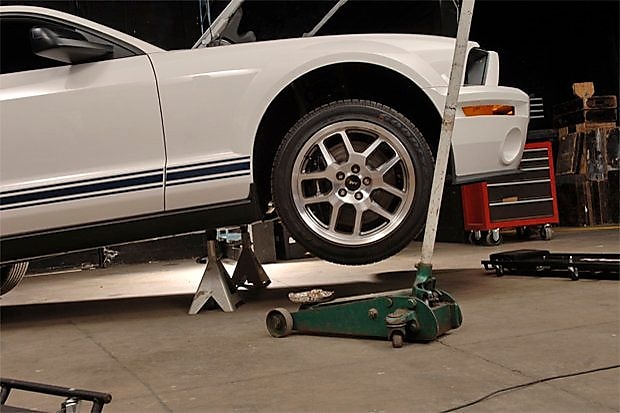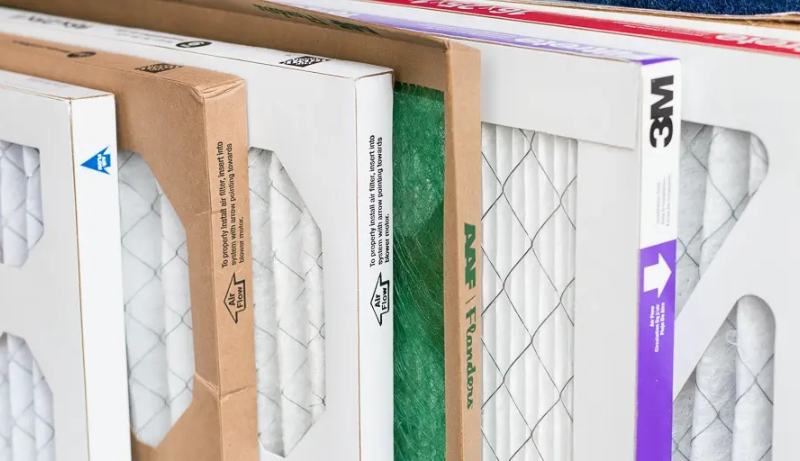Most people believe that they need to jack up their car in order to change the oil. However, this is not always the case. If you have a newer car with an oil pan that is easily accessible, then you likely will not need to jack up your car.
Older cars may require jacking up the car in order to change the oil. Always consult your owner’s manual before changing your oil to see what is recommended for your specific vehicle.
If you’re planning on changing your own oil, you’ll need to jack up your car to get to the oil pan. This can be a little daunting if you’ve never done it before, but it’s actually not too difficult. Here’s a quick guide to jacking up your car for an oil change.
First, find a level spot on which to park your car. You’ll need to be able to access both sides of the car, so make sure there’s plenty of room around it. Once you’ve found a good spot, put your transmission in park and set the parking brake.
Next, locate the jack points on your car. These are usually located near the front and rear wheels (consult your owner’s manual if you’re unsure). Place the jack under one of these points and slowly raise it until the wheel is off the ground.
Do this for all four corners of the car – you’ll want all four wheels off the ground for stability while you work. Now that your car is safely lifted, remove the old oil from the drain plug at the bottom of the oil pan (again, consult your manual). Once all of the old oil has drained out, replace the drain plug and fill up with new oil according to your manufacturer’s recommendations.
Finally, lower your car back down to the ground and give everything a once-over to make sure everything is tightened back up correctly.
Jacking Up One Side of Car for Oil Change
If you’re planning on changing your own oil, it’s important to know how to jack up one side of your car. This will allow you to get access to the drain plug and oil filter, which are located on the underside of the engine. It’s a relatively simple process, but there are a few things you need to keep in mind.
First, make sure that your car is parked on a level surface. This will help prevent the car from tipping over while it’s jacked up. Next, locate the jack points on your car.
These are typically located near the corners of the vehicle, and they’re reinforced so that the weight of the car can be safely supported. Place the jack under one of these points and start lifting slowly until the wheel is off the ground. Once the wheel is off the ground, remove the drain plug and let all of the old oil drain out into a catch pan.
Be careful not to lose this plug – some cars have special plugs that are difficult or impossible to replace if they’re lost. Once all of the old oil has drained out, replace boththe drain plug and oil filter before loweringthe car back down onto its wheels. Fill up your engine with new oil – consult your owner’s manual for recommendations on what type and how much to use – and you’re all finished!
How High to Jack Car for Oil Change

If you’re planning on changing your car’s oil yourself, you’ll need to know how high to jack the car up. Here are some tips to help you get started. First, consult your car’s owner manual.
It will likely have specific instructions on how high to jack the car for an oil change. If not, a good rule of thumb is to jack the car up so that the wheels are just off the ground. Once the car is jacked up, place Jack stands under the frame of the car (consult your owner manual for specific locations).
Then, lower the car down onto the jack stands. Make sure that the stands are stable and secure before proceeding with the oil change. With the car safely supported, remove the old oil filter and drain any remaining oil from the engine using a catch pan.
Once all of the old oil has been drained, replace it with new oil (again consulting your owner manual for capacity), and then screw on a new filter. Finally, lower the car back down to the ground and you’re all set!
Oil Change near Me
If you’re looking for an oil change near you, there are a few things to keep in mind. First, check your owner’s manual to see what type of oil is recommended for your car. You can usually find this information in the maintenance section.
Second, find a reputable oil change service provider. You can ask friends and family for recommendations, or read online reviews. Once you’ve found a few potential providers, call them and ask about their rates and services.
Be sure to ask if they offer any discounts or coupons. Finally, make an appointment and take your car in for its oil change!
Can You Change Oil Without Ramps
If you’re a car lover, there’s nothing more satisfying than getting under your vehicle and performing routine maintenance tasks yourself. Changing your own oil is one of the most gratifying things you can do for your car, but it can be tricky if you don’t have access to ramps or other lifting gear. So, can you change oil without ramps?
The answer is yes – but it’s not going to be easy. You’ll need to jack up your car and place it on stands in order to get underneath it. This process can be dangerous if not done correctly, so we recommend following these steps carefully:
1) Park your car on level ground and engage the emergency brake. Place jack stands under the frame of your vehicle at the front and rear axles. Make sure the stands are positioned securely before starting to jack up the car.
2) Using a floor jack, slowly lift the car until the weight is resting on the jack stands. Do not attempt to work beneath the vehicle while it is only supported by the floor jack – always use jack stands for safety.
3) Now that your car is lifted, locate the drain plug at the bottom of the oil pan and unscrew it using an appropriate wrench or socket.
Allow all of the old oil to drain out into an approved container. Once finished, screw the drain plug back in place finger-tight before tightening with a wrench.
4) To add new oil, removethe filler cap from atopthe engine and pour in fresh oil slowly until reachingthe Full line onthe dipstick .
Replacecapand startengine , allowingit torunfora few minutesbeforecheckingoillevel again . Addmoreoilif necessary .
Car Ramp for Oil Change
A car ramp for oil change is an essential tool for anyone who wants to change their own oil. It allows you to get your car up high enough so that you can easily access the oil drain plug and filter. Many ramps are adjustable, so you can choose the height that works best for your vehicle.
Some even have built-in steps or ledges to help make the job easier. When choosing a car ramp, be sure to pick one that is rated for your car’s weight. Most ramps will have a weight limit listed right on them.
Also, take into consideration the height of your vehicle. You don’t want a ramp that is too short or too tall – both can be dangerous. If you’re not sure what size ramp you need, ask someone at your local auto parts store for help.
Once you have your ramp, simply drive your car up onto it until the tires are resting on the platform. Then put the parking brake on and put blocks behind the back tires (just in case). Now you’re ready to start changing your oil!
How to Do an Oil Change

Assuming you would like a blog post discussing how to do an oil change: “How to Do an Oil Change” We all know that keeping up with routine maintenance on our vehicles is important.
Not only does it help keep our cars running smoothly, but it can also prevent larger, more costly repairs down the road. One of the most basic and important pieces of routine maintenance is changing your car’s oil. Here’s a step-by-step guide on how to do an oil change so you can keep your car running like a well-oiled machine!
Supplies You’ll Need:
– New oil (check your owner’s manual for the specific type and amount)
– Oil filter
– Funnel
– Jack and jack stands (or ramps if you have them)
– Wrench or socket set
– Old rags or paper towels
Step 1: Warm Up Your Car engine oils flows more easily when warm, so it’s best to start by letting your car run for a few minutes before getting started. This will make draining the old oil easier and help reduce the risk of making a mess.
Step 2: Lift Your Car & Place It On Jack Stands Once your car is warmed up, it’s time to get under it! If you have jack stands, now is the time to use them. Place them under each side of the vehicle at the appropriate jacking point and then carefully lift your car until each stand is supporting the weight of the vehicle.
If you don’t have jack stands, see if there’s a flat spot where you can safely place some ramps so that one end of each ramp is resting on solid ground while the other end supports your vehicle. Step 3: Locate The Drain Plug & Have A Catch Basin Ready The next step is to locate your drain plug so you can remove the old oil from your car.
The drain plug will be located on the bottom side of your engine block or transmission housing – again, consult your owner’s manual if you’re unsure where to find it. Once you’ve found it, place an old rag or some paper towels underneath it to catch any drips as well as used oil once we remove the plug in Step 4. Step 4: Remove The Drain Plug & Let The Old Oil Drain Now comes the messy part – removing the drain plug!
Best Jack for Oil Change
If you’re looking for the best jack for an oil change, you’ve come to the right place. In this blog post, we’ll provide detailed information about the best jacks for oil changes, so you can make an informed decision about which one is right for you. We’ll start by discussing the different types of jacks available on the market.
Then, we’ll give you a few tips on how to choose the best jack for your needs. Finally, we’ll share our top pick for the best jack for oil changes. There are two main types of jacks: floor jacks and scissor jacks.
Floor jacks are more expensive than scissor jacks, but they’re also more durable and easier to use. If you’re planning on changing your own oil regularly, a floor jack is a good investment. Scissor jacks are less expensive than floor jacks, but they’re not as durable and can be more difficult to use.
If you only need to change your oil occasionally, a scissor jack will suffice. When choosing ajack , it’s important to consider its weight capacity and lifting range . You’ll also want to make sure that it’s compatible with your vehicle .
Most importantly , be sure to read the reviews before making your purchase . Our top pick for the best jack for oil changes is the Arcan ALJ3T Aluminum Floor Jack . It has a 3-ton weight capacity and lifting range of 5-1/2 inches to 21 inches , making it perfect for most vehicles .
It’s made from lightweight aluminum , so it’s easy to maneuver , and it comes with caster wheels that make it easy to move around your garage or workshop . Plus , it has excellent reviews from users who have used it for their own oil changes .
How Many Jack Stands Do I Need to Change Oil
If you’re planning on changing your own oil, you’ll need to know how many jack stands to use. The general rule is that you’ll need two jack stands for every wheel that’s off the ground. So, if you’re only changing the oil in one wheel, you’ll need two jack stands.
If you’re changing the oil in all four wheels, you’ll need eight jack stands. Of course, this is just a general rule of thumb. You may need more or fewer jack stands depending on your specific vehicle and situation.
Always consult your owner’s manual before jacking up your vehicle to make sure you’re using the correct number of jack stands.
Do I Need to Lift My Car to Change the Oil?
Do I Have to Jack Up My Truck to Change Oil?
Where Do You Put the Jack for an Oil Change?
If you’re planning on doing an oil change on your own, it’s important to know where to place the jack. For most cars, the jack should be placed under the frame near the front wheels. You’ll want to consult your car’s owner manual to be sure.
Once the jack is in place, you can proceed with changing the oil.
Is It Ok to Change Oil on Ramps?
If you’re wondering whether it’s okay to change your oil on ramps, the answer is yes – as long as you’re using the proper equipment and taking necessary safety precautions. Changing your oil on ramps can be somewhat of a tricky process, so it’s important that you have all of the right tools and supplies before getting started. You’ll need a set of jack stands, an oil catch basin, a ratchet and socket set, an oil filter wrench, and of course, fresh motor oil.
Once you have everything gathered together, start by jacking up your vehicle and placing the jack stands under the frame for support. Next, locate the oil drain plug underneath the engine and use the ratchet to loosen it. Be sure to place the catch basin beneath the drain plug before removing it completely – this will help contain any spillage.
Allow all of the used motor oil to drain out into the catch basin, then replacethe drain plug and tighten it back up. Next, removethe old oil filter (again using an appropriate wrench) and discardit properly. Finally, installa new filter and fillup with fresh motor oil – being careful not to overfill.
That’s all there is to changing your own oil on ramps! Just be sure to take all safety precautions while working under your vehicle (such as making sure the jackstands are securely in place), and dispose of used motor oil accordingto local regulations.





Leave a Reply